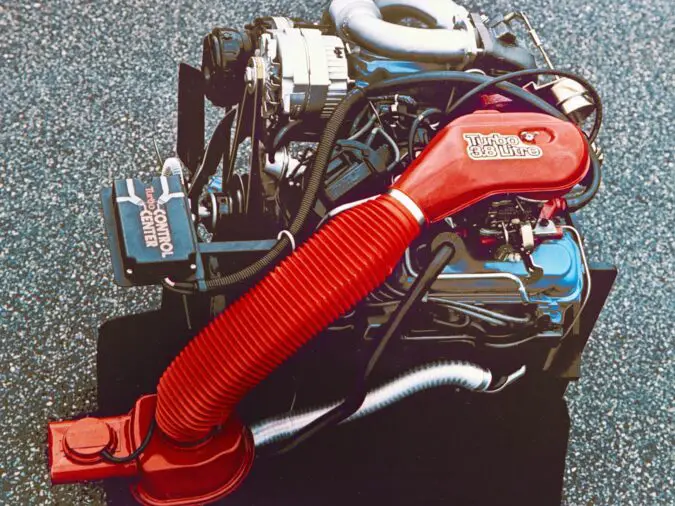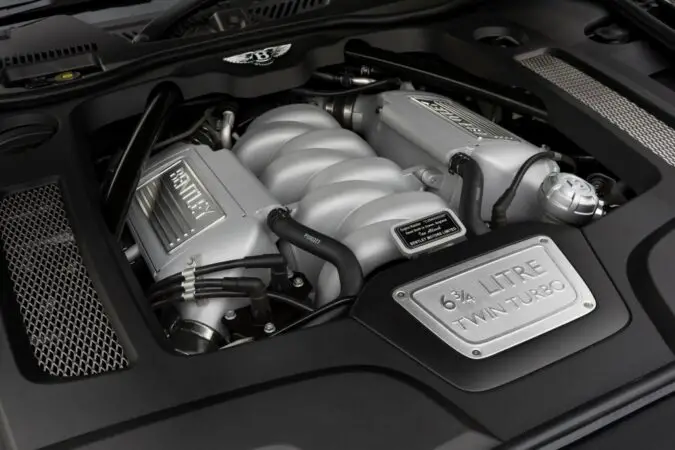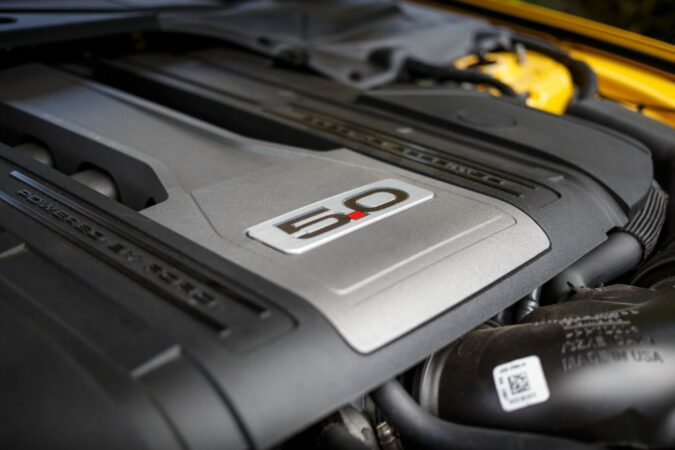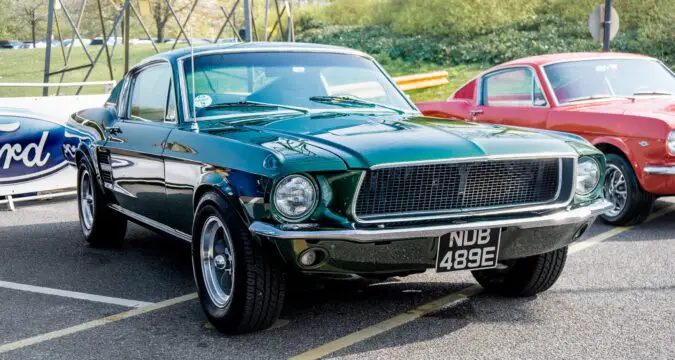There are many types of engines out on the market. V12, V10, inline 6, rotary engine, you name it. However, there are two engines that stand above the rest in terms of popularity. We are of course talking about V6 and V8 engines. But, in the battle of engine V6 vs V8, which one comes out on top? This is exactly what we’ll be taking a look at today.
If you were on the fence about whether to pick a V6 engine over a V8 or vice versa, this article will be of great use to you. There are some areas where V8 engines come out on top, while the V6 engine excels in some others.
Today, we will touch on many important factors about each of these engines, which will help you make a decision on which engine fits you the most. So, without further ado, let’s get started, shall we?
What Is A V-Shaped Engine
Before diving into the comparison of engine V6 vs V8, let us ask you a small question. Do you know what the “V” in V6 and V8 stands for? Actually, these engines get their name from the angle between the two cylinder banks. Usually, this forms a “V” shape, which gives the engines their name.
V engines allow automakers to make their engines more compact, which offers benefits in terms of both efficiency and performance. Unlike an inline engine, the cylinders are constructed at an angle, ranging from 60 degrees all the way to 90 degrees.
Additionally, the number of cylinders in a V-shaped engine varies between manufacturers as well. There have been V-engines with 2, 4, 6, 8, 10, or even 12 cylinders. And if you own an MX-5, a Miata engine swap is possible with all of them!
When compared to other engine designs, V-shaped engines offer a whole host of benefits. These engines are more compact than their inline counterparts, as they are smaller in all dimensions including length, height, and weight. There are many advantages of V-shaped engines.
Some of the advantages that stand out include improved aerodynamics, reduced engine vibrations, and increased balance of the vehicle as well as allowing for smoother operation.
V8 Engine
The history of the V8 engine dates back to 1902. That was the year when Frenchman Léon Levavasseur obtained a patent on what he called the ‘Antoinette’, a light but powerful fuel-injected V8 engine.
These V8s first made their way into speedboats and aircraft before making an appearance in automobiles. Although the engine produced an impressive 24 horsepower at 1400 rpm while only weighing 120 lbs, it was considered to be underpowered by many at the time.
A more powerful version of the same engine was dreamt up by aviation pioneer Alberto Santos-Dumont. He wanted this engine to power his 14-bis aircraft. The dimensions of the V8 were increased, resulting in an uptick in power.
The exact figures were 50 horsepower with 190 lbs of weight, a power-to-weight ratio that stood unbeaten for a quarter of a century. In 1910, an Antoinette V8-powered aircraft was used by Hubert Latham to set a then-world record of reaching an altitude of 3600 feet.
The advancement of the V8 engine continues through the years, with several manufacturers from all parts of the world contributing to the development process. In 1905, Victor Hemery set the world speed record in a car powered by a massive 1551 cubic inch V8 engine that produced 200 horsepower, which was an incomprehensible figure at the time.
The speed Hemery set was 109.65 mph, and this record-setting Darracq 200 is still around to this day. Rolls Royce also hopped on the V8 bandwagon early on. The British marque made 3 V8 powered cars between 1905 – 1906 before it reverted back to a tried and tested straight 6 design.
America, which has since become the home of V8 engines, first adopted this engine design in the late 1910s.
V6 Engine
The V6 engine is comparable to the V8 in terms of historical significance as well. The first prototype of this design was introduced in 1906. However, Delahaye was the first manufacturer to commercially use V6s. They first used this engine in the Delahaye Type 44. Here, the V6 was in a 3.2-liter Dual Overhead Cam (DOHC) configuration.
GMC was one of the first prominent American brands to use a V6 engine. In 1959, they chose this design to power the mini-truck. In the same way, Nissan became the first Japanese marque to utilize a V6. They first installed one of these engines in a car in 1983.
Similar to a V8, a V6 has two cylinder banks. Here, there are only six cylinders and that is where the engine derives its name from. V6 engines use balance shafts to maintain their natural balance. Furthermore, these increase the efficiency of the engine as well.
An average modern V6 engine makes around 400 horsepower, which is more than enough to power an average sedan or an SUV. In fact, there are some sportscars powered by V6 engines as well. However, it is important to note that the angle of the V has an effect on engine power.
Most V6 engines around today use one of three main angles of V. They are,
- Acute Angle (60°)
- Right Angle (90°)
- Obtuse Angle (120°)
1. Acute Angle
In an acute-angle V6 engine, the crankpins are installed at a 60-degree angle. The main advantage of this is reducing engine vibrations. In addition, the size of the engine can be greatly reduced by utilizing an acute angle. This allows manufacturers to minimize the size of the engine compartments.
Another benefit of an acute angled V6 is the elimination of the balance shaft. This helps to keep the weight of the engine at a minimum, which is a consideration many manufacturers have especially in the production of sports cars.
2. Right Angle
The manufacturing cost of 90-degree V6 engines is very less compared to other angles. But, this comes at the cost of increased engine vibrations. Engine makers have to install crankpins in order to minimize these vibrations to an acceptable level.
3. Obtuse Angle
If the cylinder banks are installed with a 120-degree angle between them, those engines are called obtuse-angled V6 engines. Doing so has several benefits, including the exclusion of crankpins thanks to reduced vibrations. Additionally, the pistons can be attached at the same crank as this design as well.
Although the V6 engine is more than a century old, its popularity only keeps going up. With increased efficiency and performance, it is safe to say that V6 engines will be around in the automotive world for years to come.
Comparison Of Engine V6 Vs V8
When it comes to engine V6 vs V8, we can’t definitively say one is better than the other. In order to understand what areas one engine excels in over the other one, we will be looking at how these two engines perform in several key areas. The factors we will be taking a look at are,
- Engine Dimensions
- Performance
- Handling
- Fuel Efficiency
- Reliability
- Sound
- Durability
- Towing Capabilities
- Manufacturing Cost
Engine V6 Vs V8 #1 – Engine Dimensions
Although both V6 and V8 engines share some characteristics such as having two banks of cylinders, there are some stark differences in their dimensions. As you already know, a V8 engine has two more cylinders than a V6 does. This contributes to the additional size, displacement as well as weight of V8s.
V6 engines have an odd number of cylinders on each bank, which makes them fundamentally out-of-balance. This limits their maximum displacement to around 4 liters. To mitigate the high vibrations, these engines require the use of balance shafts.
The addition of balance shafts adds weight and makes V6 engines more complex to operate. In contrast, V8 engines are much easier to balance, which allows them to run smoothly.
Engine V6 Vs V8 #2 – Performance
Under normal circumstances, Both V6 and V8 engines produce similar amounts of horsepower. For most buyers, the price of the performance aspect of V8 engines over V6s might not be very compelling. On the other hand, our list of the fastest V6 cars on the market might get you tempted to the other camp.
However, thanks to their sheer size, V8 engines offer more possibility for aftermarket modifications. Most V8 engines easily exceed the 4.0-liter displacement threshold set by V6 engines. This allows them to have a higher power ceiling, making them appealing to the racing crowd.
If you are after the best acceleration and top-speed figures in the game, a V8 is the way to go. They have a quicker throttle response and accelerate faster than V6 engines. On the other hand, V6 engines need the aid of forced induction to match V8 levels of power. However, doing so increases the overall cost of the engine.
Additionally, building engines with forced induction like turbochargers are complex as well. This is the main reason why these types of V6 engines are increasingly harder to come by. You can check out our guide on how you could add a twin turbo for a Camaro V6 to find out why this is so.
Engine V6 Vs V8 #3 – Handling
In terms of handling, most gearheads believe that V6 engines hold the upper hand. Two fewer cylinders equate to less weight to handle up front allowing V6-engined cars to manage turns, corners, and curves much better.
But, other aspects play a part in determining the handling characteristics of a car as well. Vehicle design has come a long way, and nowadays you’ll find V8 vehicles that handle well compared to their V6-engined counterparts. For example, modern V8 muscle cars like the Ford Mustang GT350R are considered by many to be some of the best sports cars on the market.
However, the same couldn’t be said about their predecessors that came a decade earlier. Overall, when it comes to vehicles in the same price range, the handling of V6-engined cars is just enough to edge out that of V8s.
Engine V6 Vs V8 #4 – Fuel Efficiency
If you own a vehicle with a V6 engine, you’ll probably spend less time at the gas pump. Additionally, you will also save some money that will otherwise be spent on fuel as well. When it comes to fuel economy, smaller also equals better.
Modern V8 engines are equipped with some technologies that allow them to be more fuel efficient. The Hemi V8 engines that come in recent Dodge models act as a great example of this. Although these large and burbly engines are mighty in terms of displacement, they can seamlessly shut off half of their cylinders to save more fuel when cruising around town.
The 2021 Ford F-150 lineup provides a great example of engine V6 vs V8 fuel efficiency. The EcoBoost V6-powered F-150 is rated by the EPA to get 20/26 mpg, while the V8-equipped version only gets 17/24 mpg.
Engine V6 Vs V8 #5 – Reliability
In their naturally aspired form, both V6 and V8 engines are more expensive to maintain when compared to inline engines. As these engines are more focused on performance, they may require expensive synthetic oils, which drives up their maintenance cost.
On the other hand, the maintenance cost will skyrocket if the engines are paired with a supercharger vs a turbocharger. These forced induction devices add complexity to the engine design and may require additional care in order to run as intended.
However, if we dive a bit deeper into engine V6 vs V8 maintenance, we can see that V6 engines are slightly more reliable. Compared to a V8, there are fewer moving parts, resulting in lower expenses over the engine’s lifetime.
For more specifics on particular V8 engines, we have an abundance of resources to refer to how reliable they are. For example, we’ve previously discussed the Dodge 4.7 engine, as well as the Chevy Vortec 6.0, in addition to the Ford F150 5.0 engine problems.
Engine V6 Vs V8 #6 – Sound
When it comes to performance cars, the sound is one of the areas to which most people pay attention. Between these two engines, V8s produce the best overall noise. The V6 engine comes in a close second, but most engines of this variety have been muffled down for quietness.
Engine V6 Vs V8 #7 – Durability
Durability and longevity are two factors you should pay close attention to when choosing a vehicle. The engine that lies under the hood plays a big role in determining how long a vehicle can serve reliably before running into maintenance issues.
Overall, V8 engines are stressed less when compared to V6s, making them more durable. In contrast, V6 engines have to work hard to achieve the same performance levels as a V8, which takes a toll on the internal components.
No matter which engines your vehicle has, the best way to ensure its reliability is by performing the proper maintenance procedures at the scheduled times. This will go a long way in letting you get many trouble-free miles out of your vehicle.
Engine V6 Vs V8 #8 – Towing Capabilities
If you are the type of person that tows a lot, you might want to keep an eye on this section. When it comes to towing and hauling goods, V8 engines are the way to go if you are after the best performance.
V8 engines won’t be much strained even when they are pulling heavy loads. This allows them to tow heavier loads for longer, and have a better payload capacity as well. However, that is not to say that V6 engines can’t tow. Some V6-equipped ones, like the 2021 Ford Expedition with the twin-turbocharged EcoBoost V6, offer class-leading towing capabilities.
Engine V6 Vs V8 #9 – Manufacturing Cost
The final point we will be discussing when it comes to engine V6 vs V8 is the overall manufacturing cost. This is an area where most vehicle manufacturers are concerned with. You see, the cost of manufacturing a V6 engine is lesser when compared to that of a V8.
Remember how most vehicles come with a V6 in the base model and cost extra to upgrade to a V8 model? Well, now you know why!
Although the addition of turbochargers and supercharger drives up the cost, it is clear that V6 engines are the more cost-effective option, at least for manufacturers.
Now, you know all about how V6 engines compare to the much bigger V8 ones. In the next section, we will take a look at how the V6 compared to another popular six-cylinder engine – the inline six.
Inline 6 Vs V6
Before the rapid rise of the V6 engine, the inline 6 was the go-to choice for many performance car manufacturers. Some of the most iconic cars in the world such as the BMW M3, Nissan Skyline GT-R, and the Toyota Supra were ones powered by monstrous inline 6 engines.
As with all engines, inline 6’s have their own set of advantages and disadvantages. It is important to take these factors into consideration in order to understand why these engines have largely been replaced by ones in the V6 configuration.
1. Advantages
One of the main advantages inline 6 engines have over V6 engines is their simplicity in design. As the name suggests, the cylinders of this engine are neatly arranged in a straight line, and the cylinders lay directly in line with each other. This allows all cylinders to share the same head and valve train, which is a stark difference from a V6.
Whereas a DOHC V6 engine uses four smaller camshafts to open and close the valves, an inline 6 engine with similar technology only needs two long camshafts to get the same amount of work done. This accounts for lesser moving parts, and a lesser chance of things going wrong.
Thanks in part to their design, inline 6 engines allow mechanics easier access to crucial components like the spark plugs and leads. The ease of access accounts for lesser labor costs in maintenance work.
Another area where inline 6 engines hold the upper hand over V6 engines is in engine balancing. In fact, this is one of the biggest advantages of this engine design. Here, all the pistons move in tandem with each other. This allows these engines to operate more smoothly, which is what initially made them famous among car enthusiasts.
2. Disadvantages
One of the main disadvantages of inline 6 engines has always been packaging. Compared to the much more compact V6 engines, the longer dimensions of inline 6 have made them unpopular among car manufacturers.
In a day and age where engines are made to be compatible across a whole host of models, this problem has contributed to making these engines all but obsolete. Inline 6 engines also lack the rigidity that is present in much smaller engines.
The longer dimensions have a negative effect on the vehicle’s center of gravity. Moreover, the longer crankshafts and camshafts tend to slightly flex, which is not a desirable quality in a high-performance engine.
Smallest V8 Engine
Although we have come to expect V8 engines to be gas guzzlers that are massive in size, they don’t always have to be that way. Throughout the years, there have been several compact yet powerful V8 engines made by vehicle manufacturers from all over the world.
The 215 V8 developed by General Motors is one of the earliest examples of a small yet powerful V8 engine.
This 215 cubic inch V8 made closer to 200 horsepower along with 230 lb-ft of torque, which was an impressive performance figure for the time. The engine was entirely made of aluminum which helped to keep the overall weight at a minimum.
This engine was used by a whole host of GM-owned marques such as Pontiac, Oldsmobile, and Buick. In 1962, GM paired the 215 with a turbocharger, becoming the first manufacturer in the world to do so.
Although the American manufacturer ended the production of this engine in 1963, it continued to be used in vehicles manufactured by the British Rover group for years to come.
Verdict
When it comes to engine V6 vs V8 (our write-up on the RAM V6 vs V8 also sheds more light on this debate), there are several areas in which these engines differ from each other. Similarly, there are some common traits these two engines share with each other as well.
Ultimately, the best engine for you depends on what you plan to use your vehicle for. If you are looking for a vehicle to carve the corners of a canyon, a V6 is the way to go. Similarly, a V8 is the best choice if you are looking to haul heavy loads across the country frequently.
Frequently Asked Questions
How Many Cylinders In A V6
A V6 engine has 6 cylinders in total. These cylinders are shared across two banks with three cylinders in each one.
What Does CC Mean In Engines
CC stands for cubic capacity. It indicates the total volume of the engine’s combustion chamber. If the cc value is higher, a larger amount of fuel and air can be compressed to produce power.
What Does Liter Mean In Engine
The displacement of an internal combustion engine is measured in liters. When an engine gets bigger, the amount of power it can produce increases as well.
What Does V6 Mean
V6 is a type of engine with six cylinders. Here, all the cylinders share a common crankshaft and are arranged in a V configuration.
What Does V8 Mean
A V8 is an internal combustion engine, with two banks of four cylinders each. These engines have become synonymous with their use on powerful American muscle cars.





